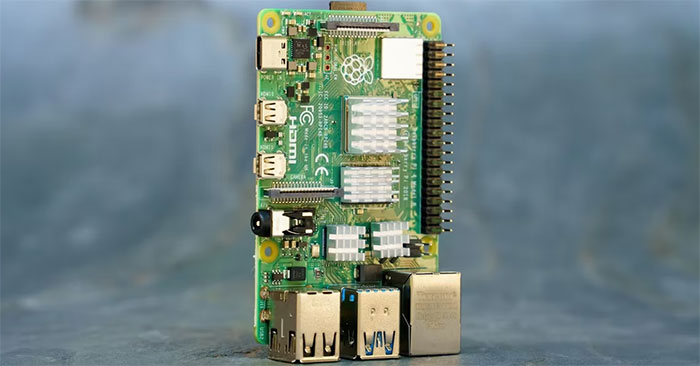Remote Working And Cyber Safety: What Businesses Can Do To Protect Their Employees And Data
With this shift comes a heightened need for cyber safety, as more vulnerable home networks replace traditional office security perimeters. The responsibility now falls on businesses to ensure their employees and data remain secure in this dispersed work environment, requiring a blend of technology, policy, and education.
In response to these challenges, companies must adopt a comprehensive approach. This involves deploying advanced security tools and fostering a culture of cyber awareness among employees.
 Picture 1 of Remote Working And Cyber Safety: What Businesses Can Do To Protect Their Employees And Data
Picture 1 of Remote Working And Cyber Safety: What Businesses Can Do To Protect Their Employees And Data
Ensuring Remote Working Tools Are Secure
The tools and software used by employees become critical points of vulnerability when working remotely. Companies should find a secure remote desktop alternative which offers enhanced security features. These solutions provide encrypted connections and robust authentication methods, essential for protecting sensitive company data.
Beyond selecting secure tools, it's equally important to ensure their proper implementation and use. Regular security audits of these tools can help identify potential weaknesses. Additionally, employees should be trained on the secure usage of these tools, including understanding the importance of regular updates and avoiding unauthorised modifications, thereby reducing the risk of security breaches.
Implementing Strong Authentication Methods
Robust authentication is a cornerstone of remote work security. Businesses should implement strong authentication methods across all remote working platforms, like two-factor or multi-factor authentication. These methods add an additional security layer, ensuring that only authorised personnel can access sensitive company information, significantly reducing the risk of data breaches.
However, strong authentication is only effective if consistently applied and understood by all employees. Regular training and reminders about the importance and proper use of authentication methods can help maintain this security layer. Employees must understand that these measures are in place to protect both their personal information and company data from unauthorised access.
Regular Software Updates and Patch Management
One of the most straightforward yet often overlooked aspects of cybersecurity is the regular updating of software and systems. Cyber attackers frequently exploit vulnerabilities in outdated software, making it imperative for businesses to implement a rigorous schedule for software updates and patch management.
In addition to implementing these processes at the organisational level, it's important to educate employees about the importance of keeping their personal devices updated. This includes regular reminders and easy-to-follow guidelines for updating operating systems, applications, and security software, thereby minimising the risk of these devices becoming entry points for cyber attacks.
Educating Employees on Cybersecurity Best Practices
Employee education is a vital component of a robust cybersecurity strategy. Regular training on best practices, like recognising phishing attempts, secure password management, and the importance of using secure networks, is crucial. These training sessions should be engaging and relevant, helping employees understand their role in maintaining cyber safety.
This education should be an ongoing process. Cyber threats are constantly evolving, and so should the knowledge and awareness of the workforce. Regular updates, newsletters, and training sessions on the latest cyber threats and prevention techniques can help maintain a high level of cyber awareness among employees, making them an effective first line of defence.
Secure Network Connections for Remote Workers
Ensuring secure network connections for remote workers is fundamental. Employees often use home Wi-Fi or public networks, which may not be secure. Businesses should provide virtual private network (VPN) access to their employees, creating a secure tunnel for data transmission and reducing the risk of data interception.
In addition to VPNs, companies should consider other network security measures such as firewalls and intrusion detection systems. These tools can provide an additional layer of security, monitoring network traffic for suspicious activity and blocking unauthorised access. Employees should also be guided on securing their home networks, such as using strong Wi-Fi passwords and enabling network encryption.
Regular Cybersecurity Audits and Assessments
Conducting regular cybersecurity audits and assessments is essential in identifying potential vulnerabilities within a remote working setup. These audits provide insights into the effectiveness of current security measures and highlight areas where improvements are needed. They should cover all aspects of the remote working environment, from network security to employee compliance with security policies.
These assessments should be complemented by regular penetration testing, which simulates cyber attacks to test the resilience of the company's cyber defences. By proactively identifying and addressing vulnerabilities, businesses can strengthen their cyber defences and reduce the likelihood of successful cyber attacks.
Developing a Comprehensive Incident Response Plan
Even with robust security measures, the risk of a security breach cannot be entirely eliminated. It is crucial for businesses to have a comprehensive incident response plan in place. This plan should outline the steps to be taken in the event of a breach, including containment strategies, communication protocols, and recovery processes.
The plan should also include regular drills and simulations to ensure that all employees know their roles and responsibilities in the event of a cyber incident. This not only prepares the company to respond effectively to a breach but also helps minimise the damage and recover more swiftly.
Summary
As remote working becomes increasingly prevalent, businesses must prioritise cyber safety to protect their employees and data. This requires a multi-dimensional approach encompassing secure tools, strong authentication, regular updates, employee education, secure networks, regular audits, and a robust incident response plan.
You should read it
- Fix Steam Remote Play not working error
- Manual Samsung TV remote most detailed
- How to set up Microsoft Teams to work remotely
- Cloud Desktop remote working solution officially launched
- Download GOM Remote: Remote Control App for GOM Player and GOM Audio
- 9 Amazing Cloud-Based Collaboration Tools for Remote Work
- Where to buy TV control, how to buy it well?
- Fix Wake on Lan error not working on Windows 10
- Introduction to Network Access Protection (Part 1)
- 3 common errors on air conditioner remote and how to fix it
- The difference between Remote Desktop (RDP) and VPN
- 8 best ways to control Kodia remotely






 Protect businesses from anger from former employees
Protect businesses from anger from former employees Top 7 common reasons why employees leave businesses
Top 7 common reasons why employees leave businesses Security risks when working remotely during the coronavirus outbreak
Security risks when working remotely during the coronavirus outbreak 4 Ways To Track The Progress Of Your Remote Employees
4 Ways To Track The Progress Of Your Remote Employees Cloud Desktop remote working solution officially launched
Cloud Desktop remote working solution officially launched How to protect remote desktop from malware RDStealer
How to protect remote desktop from malware RDStealer